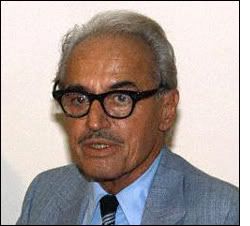 General
General  General Archive
General Archive  The Legacy Of Marvin Miller
The Legacy Of Marvin Miller

The Veterans Committee failed,
again, this year to elect anyone to the Baseball Hall of Fame.
This may be of some interest to Ron Santo or Gil Hodges fans but for
most the news invokes nothing more than a shrug.
But Hal Bodley, in Tuesday’s USA Today, upped the stakes by suggesting that
if Marvin Miller, the long time head of the players union, didn’t
get voted in by the Veterans Committee there should be an investigation.
Bodley’s point was that as the architect of what has become the most
powerful union in professional sports, Miller’s influence on the game
is profound. But according to the Veterans Committee’s
rules, to be eligible
a person such as Miller’s “overall contribution” to the game must
be considered. Thus, while it’s hard to disagree with Bodley
that Miller’s impact on the game was profound, whether that influence
contributed to the overall good of the game is highly debatable.
It’s probably not necessary
to talk about the history of unionism generally or it’s relationship
to professional sports. Suffice it to say that when it comes to
baseball, the owners got what they deserved when the players union gained
much of its momentum under Marvin Miller. (For a good discussion on
the history of the Major League Baseball Players Association, see here) The major sticking point when
Miller arrived in 1965 was the reserve clause which, in operation, bound
a player to his club until the club, in its sole discretion, released
the player. Thus, for example, if a player had a two-year contract,
at its conclusion his only choice was to negotiate a new deal with his
current club or quit. Only if released by his club was a player
free to play for another. He wasn’t otherwise free to sign elsewhere.
Clearly the presence of this clause, standard in all player contracts,
gave all the economic leverage to the clubs forcing the players into
a take-it-or-leave-it situation. In the days of the reserve clause
and even in the several years thereafter, it was not unusual for a player
to get a pay cut if he had a poor year. He had no choice. These days,
of course, the only thing a poor year gets is a smaller raise.
Miller’s major achievement with
respect to the reserve clause was to get it reversed through binding
arbitration. To understand how that happened and to fully appreciate
its impact, recall that the most famous challenge to the reserve clause
was by St. Louis Cardinals outfielder Curt Flood, who sued the owners
for allegedly violating antitrust laws. (An excellent four-part
series on the entire Curt Flood matter can be found by searching the
main archives on www.athomeplate.com) Federal antitrust laws apply only to
businesses engaged in interstate commerce or businesses affecting interstate
commerce. In most cases a business will likely fall into one or
the other categories and thus be subject to federal law. Flood
argued that baseball was a business in interstate commerce and that
the clubs, as separate entities engaged collectively in interstate commerce,
used the reserve clause as a means of stifling competition for player
services. Typically, it is illegal for such businesses to conspire in
that fashion and if found guilty they are liable for treble damages
or three times the actual damage caused.
The battle Flood faced, however,
was that at the time professional baseball was deemed to be exempt from
antitrust laws through a series of Supreme Court decisions dating back
to 1922. In essence, the Supreme Court had ruled in those days
that baseball games were exhibitions and any impact on interstate commerce
was incidental. This may have been technically true in 1922 but
had long since ceased to be the case by the time of the Flood case in
1970. However, considering the Supreme Court precedent, the trial
court in the Flood case was reluctant to rule to the contrary and thus
upheld the antitrust exemption and dismissed the case. Eventually
the case made its way to the Supreme Court which, oddly, upheld its
prior decisions based on the traditions of the game. Of course
this ruling was in spite of the major changes in the game since 1922,
in spite of the fact that no other professional sport enjoyed a similar
exemption, and, most importantly, in spite of the fact that baseball
clearly was involved in interstate commerce. Consider, for example,
how many different states each major league team must travel to in order
to play away games. In fact, for nearly every major league team,
every away game is in a different state. In spite of having virtually
every legal reason to rule in Flood’s favor, the Supreme Court felt
that it was up to Congress to change baseball’s antitrust exemption,
not the courts. This anomalous result continues to this day.
Although Miller and the players’
union backed the Flood lawsuit and lost, the battle was hardly over.
One of Miller’s first tasks when he took over was to negotiate into
the collective bargaining agreement a binding grievance arbitration
process, something common in most collective bargaining agreements.
This allowed players to take contractual disputes to a neutral arbitrator.
Two players, under Miller’s guidance, Andy Messersmith and Dave McNally,
challenged the reserve clause as a violation of the collective bargaining
agreement. This allowed the dispute to go to an arbitrator and
in 1975, Peter Seitz ruled that the reserve clause only bound the player
to his club for one additional year and not in perpetuity. This
essentially put an end to the reserve clause and opened the gate for
what would eventually become free agency.
The reserve clause was an antiquated
concept that couldn’t stand and probably existed far too long.
Free agency, properly implemented, is basically good for the game, the
players and the fans, although not in equal measures. Still, it’s
hard to find fault in Miller for working so hard to make this a reality.
But the advent of free agency, in some fashion, likely would have happened
even without Miller as Congress has often rattled the saber of eliminating
the antitrust exemption as a way of getting baseball owners to do what
they want, including toughen drug testing policies. But even if
free agency never would have happened without Miller, it hardly seems
like a sufficient reason in and of itself to enshrine him in the Hall
of Fame unless you’re going to also enshrine the arbitrator who had
the courage to render the actual decision.
The main sticking point on Miller
though is the rest of his influence on the game, which hasn’t been
nearly as good for the fans. Under his watch and that of his hand-picked
successor, Donald Fehr, there have been five strikes by the players.
The first strike, in 1972, resulted in the loss of 86 games. Its
conclusion brought about salary arbitration, a system the fans are still
paying for today.
The 1981 strike cost a whopping
713 games and a split season. Cleveland fans will recall that
the season resumed on August 10 with the All Star game played in Cleveland.
More importantly, it was this strike that really opened the breach between
the players and their fans that free agency only exacerbates to this
day. It really was the beginning of the haves vs. have nots system
that still exists and is responsible, in large part, for the lack of
true competitive and economic balance in the league, robbing the fans
the full benefit that baseball could offer. Not surprisingly,
following the strike attendance and television ratings dropped drastically.
The last major strike began in
August, 1994 and resulted in the loss of the rest of that season, including
the post season. In all, 938 games were lost. When the strike
was settled just prior to the beginning of the 1995 season, a rough
form of a salary cap and revenue sharing was in place. But for
fans, if the bloom wasn’t off the rose in 1981, it certainly was after
what happened in 1994. Baseball may still have legions of fans
but few if any don’t completely understand that it is a business and
that they are now considered the least important part of the equation.
It was also under Miller’s watch
and more so under Fehr’s that performance enhancing drugs really began
to shape the cynical way in which many modern day baseball records and,
by proxy, the players who set them are viewed. Fehr, following
the blueprint of his mentor, effectively squelched any effective drug
testing program as an alleged violation of the players’ rights.
Maybe so, but in the end it was the fans, again, who suffered for the
loss of integrity in the sport.
This point here isn’t to criticize
Miller for doing his job or to stake out some sort of anti-union stance.
But never forget that Miller was a hired gun whose sole interest was
in enhancing the status of his clients, the players. Miller never once
tried to instill in them the importance of the fans to the health of
the game and, as a result, the distance between the players and the
fans, which began under Miller’s watch, has never been greater.
For anyone who still doubts this premise consider the story just the other day in which Fehr, according
to Gary Sheffield, basically told the players not to cooperate in former
Senator George Mitchell’s probe into steroids. If the integrity
of the game and the interests of the fans are truly critical then Fehr
should be encouraging the players to ferret out the cheaters, not protect
them.
- NBA Announces 2013-2014 Schedule
- Browns Ink Sharknado
- Sharknado A No-Show For Rookie Camp
- Trent Richardson Out Until Training Camp
- Browns Sign Brandon Jackson
- Carrasco Suspended Eight Games
- Browns Add to Wide Receiver Depth with David Nelson
- Browns Need to Learn from Past Draft Mistakes
- Browns Release Chris Gocong and Usama Young
- Browns Missing on Grimes Disappointing, But Not The End
The TCF Forums
- Official- Browns Coach Search/Rumors
mattvan1 (Tuesday, January 21 2014 1:19 PM) - Movies coming out
rebelwithoutaclue (Tuesday, January 21 2014 12:56 PM) - 2015 Recruiting
jclvd_23 (Tuesday, January 21 2014 12:38 PM) - The 2014 Offseason Thread
Larvell Blanks (Tuesday, January 21 2014 12:25 PM) - Chris Grant's first 3 drafts
Kingpin74 (Tuesday, January 21 2014 10:13 AM) - Mike Brown
YahooFanChicago (Monday, January 20 2014 11:15 PM) - 2014 Hoops Hockey Hijinx
jpd1224 (Monday, January 20 2014 4:44 PM) - 2014 Recruiting
jclvd_23 (Monday, January 20 2014 2:26 PM) - Wish List - #4 Pick
Hikohadon (Monday, January 20 2014 1:26 PM) - #1 overall pick Anthony Bennett
TouchEmAllTime (Sunday, January 19 2014 1:28 PM)



